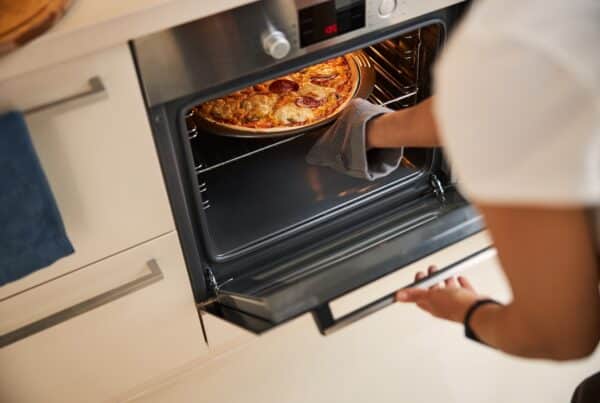
Are you having toilet troubles? Learning how to quickly turn off the water supply to your toilet could enable you to resolve leaks, make repairs, or perform maintenance yourself. With a few basic tools and steps, you’ll master this helpful homeowner skill in no time.
In the sections below, we’ll go through the entire process, from locating the water shut-off valve to stopping water flow and troubleshooting any issues along the way. Don’t let the various valves and pipes intimidate you! Anyone has the power to take minor toilet maintenance into their own hands – let’s learn how together.
Your Toilet’s Water Supply
Firstly, let’s get started with the basics of how the water supply system works. Most toilets have a single supply line that runs from a main water pipe in your home to the toilet’s tank. This line is controlled by a shut-off valve, typically located on the wall behind the toilet or just underneath it.
The shut-off valve is a basic mechanism that opens and closes access to the water supply. Turning the valve will close the supply line and stop water from flowing into the toilet’s tank. Similarly, turning it the opposite way allows water to flow again. Locating this main shut-off valve is the first key step in the process. Once you find it, you’ll be able to control the toilet’s water supply in no time. Let’s break down the rest of the process!

Steps to Turn off the Water Supply to Your Toilet
Whenever issues arise that warrant a stop to the toilet’s water supply, follow these steps to get it done smoothly:
1) Locate the Shut-Off Valve – The first step is to find the water supply shut-off valve, typically located behind or underneath the toilet. Carefully trace the braided supply line from the tank to the wall/floor connection point and you will find the valve near this junction.
2) Turn the Valve Clockwise – Once you have located the shut-off valve, turn it slowly clockwise as far as it will go until perpendicular to the pipe. This fully closes the valve and stops water from entering the supply line. Go slowly to avoid any damage.
3) Flush the Toilet – After closing the supply valve, flush the toilet to drain any remaining water from the tank down into the bowl. This lowers the water level for maintenance access.
4) Check for Leaks – Finally, with the valve fully closed, inspect all connections for any sign of water leaks. Tighten if necessary but avoid over-tightening. Place a towel underneath to catch minor drips.
Troubleshooting Common Issues
While turning off your toilet’s water supply is a straightforward process, you may encounter some common problems along the way. Here are a few practical tips for common holdups in the process:
- Stuck Shut-Off Valve – If the shut-off valve is resisting, don’t force it. This can cause damage. Try spraying lubricant like WD-40 on the valve and shaft and let it sit briefly before trying again. The lubricant can help loosen a stuck valve.
- Minor Leaks – It’s common to have minor water leaks around the shut-off valve, connections, or supply line when closed. Tighten any connections gently if needed. Avoid over-tightening. Place a towel under any leaks and monitor.
- Corroded Valve – An older shut-off valve may show corrosion and rust, making it harder to turn and properly close. Try the lubricant technique, but the valve may need a replacement.
- Unable to Locate – If you cannot locate the shut-off valve behind or under the toilet, trace supply lines back to the main water supply and shut off for the home. This will turn off all water, but allow you to make needed toilet repairs.
Remember, take your time throughout the process use caution, and don’t be afraid to ask for help!

Other Recommended Maintenance
While you have the toilet’s water turned off, it’s a great opportunity to complete some additional maintenance checks and tasks.
Start by removing the tank lid to inspect the various components inside. Check the flapper valve at the bottom of the tank that seals water in the bowl. If it looks worn out, replacing this is relatively simple. You can also examine the fill valve, the mechanism that refills the tank after flushing, and clean or replace any corroded parts. Look for signs of leaks around tank bolts as well and tighten if necessary.
Finally, give the tank walls a scrub with a toilet cleaning brush or baking soda solution to remove any grime buildup. Keeping up with these simple maintenance steps helps prevent many common toilet troubles and ensures your unit is operating at peak performance.
When to Call a Professional
While these steps allow you to handle minor leaks, stuck valves, and routine maintenance, certain situations warrant expert assistance.
Significant, persistent leaks coming from the shut-off valve area that you cannot resolve by gently tightening connections require a professional repair. If the shut-off valve itself is cracked, corroded, or broken and unable to stop water flow even with lubricant, a replacement is likely needed. A stuck valve that you cannot turn by any method without forcing indicates a larger issue that should be addressed by an expert.
However, if you can’t locate the water supply shut-off valve behind or underneath the toilet after thoroughly searching, get assistance. Additionally, professionals are best for any servicing involving installing replacement parts or complex repairs.
Conclusion
Minor plumbing issues can be inconvenient enough without having to scramble to turn off the water to your toilet. Now, you can locate the shut-off valve, turn it clockwise to stop water flow, flush out remaining water, and check for leaks.
While every homeowner should be empowered to take small concerns into their own hands, professionals are necessary sometimes. For stuck valves, complex repairs, or anything you feel unsure about handling, never hesitate to call in help.
To schedule a comprehensive home inspection or a closer look at your plumbing system, get a quote from All Coast Home Inspections in Houston, TX, and surrounding areas today.



